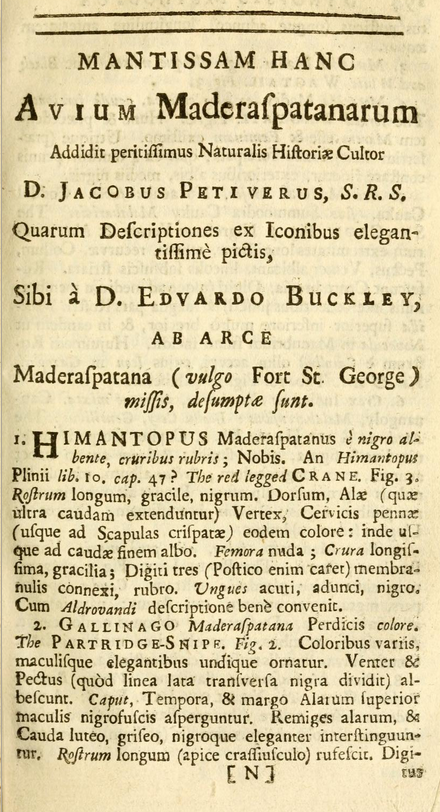More weird Hindi phrases
Not all of the strange Hindi phrases I've encountered can be traced to awkward translations. Here are some that I find baffling all by themselves.
Not all of the strange Hindi phrases I've encountered can be traced to awkward translations. Here are some that I find baffling all by themselves.
A few common Hindi phrases are bogus translations of equivalent English phrases.
I've read many pieces about the people after whom birds are named, and it struck me recently that most of them are male. Not surprising, since there must have been many more male ornithologists than women; but there are nevertheless many birds named after women. Because of the regularity of Latin grammar, we can find a considerable number just by looking for names that end in -ae.
I sometimes enjoy reading about matches in the newspaper or on Cricinfo, but I can stand it only in small doses. I was reminded of a particularly annoying trope in cricket writing today by the first paragraph of Sriram Veera's article on the problem with [M.] Vijay.
M. Vijay can be a good batsman to watch. At times his skill even makes you gasp. There is this shot he plays, when he just pushes at a length delivery, on the up, and the ball speeds past the bowler to the boundary. You think that mid-off, if not the bowler himself, will cut it off for it was just a mere waft. The ball, however, keeps accelerating.
No, it bloody well doesn't keep accelerating.
Unless M. Vijay runs along with the ball and keeps hitting it (is there an ICC regulation against that?), the only force acting upon it once it has left the bat is friction. In the absence of other forces, the ball can only decelerate on its way to the boundary.
No matter how good the batsman, the laws of physics don't change.
Edward Buckley's seventeenth-century Latin description of a bird specimen is detailed enough to identify it as an Indian Pitta.
One of the many treasures on archive.org is a copy of the 1713 book "Synopsis Methodica Avium et Piscium" by the British scientist John Ray (or "Joannis Raii" in Latin). The book is interesting not only because it predates and influenced Linnaean taxonomy, but especially because it includes a few illustrations and descriptions of "Indian birds about Fort St. George" (near Madras) at the end, contributed by Edward Buckley, a surgeon at the Fort.

The Zitting Cisticola is just one familiar example of the many birds whose scientific names are derived from their preferred habitat.
While trying to explain something about filesystems the other day, I realised that there are too many different (but related) things that can be reasonably described by that term.
Whenever I hear someone say This room is so claustrophobic!
, I
have to bite my tongue and remind myself that there is no simple way in
English to distinguish between "suffering from claustrophobia" and
"inducing claustrophobia".
Another word that suffers from the same problem (ambiguity, that is, not a fear of closed spaces) is "suspicious".
"He looks suspicious"… but do I suspect him, or does he suspect me?
I've noticed a strange quirk of Delhi English—people say "until" when they really mean "while", and are oblivious to the inverted meaning of the resulting sentence.